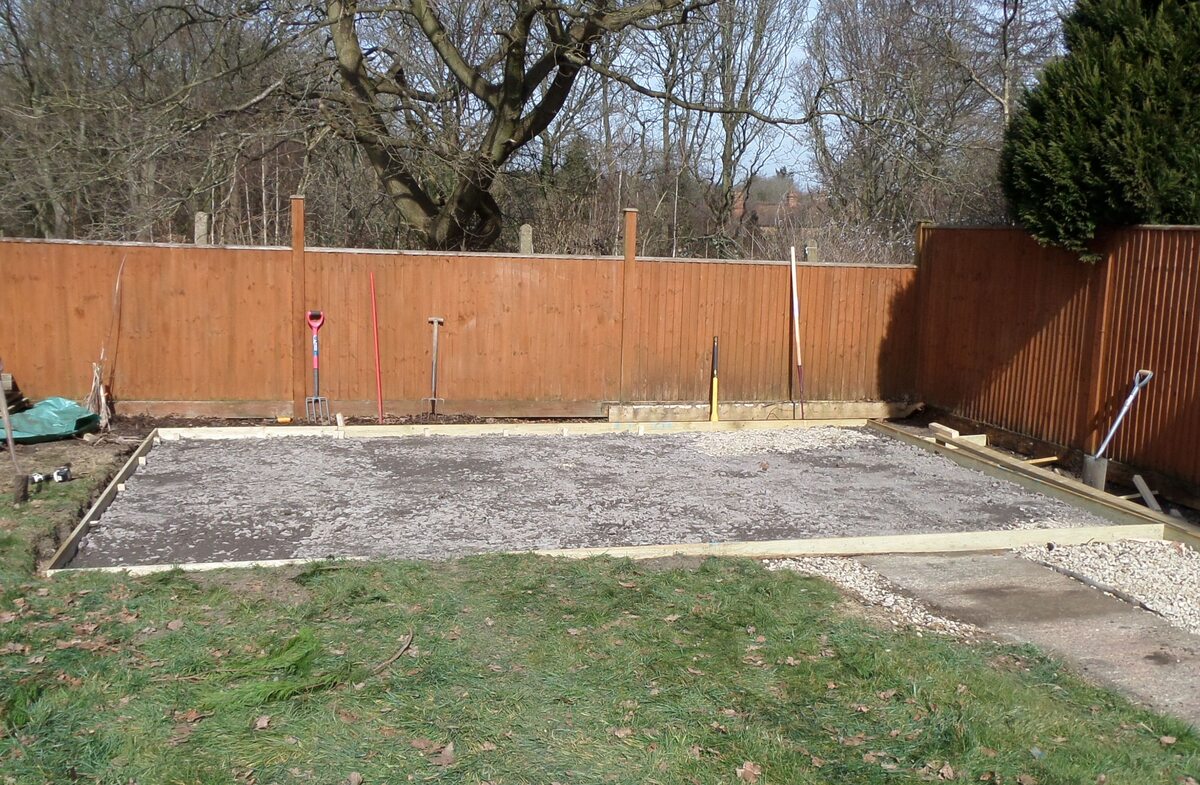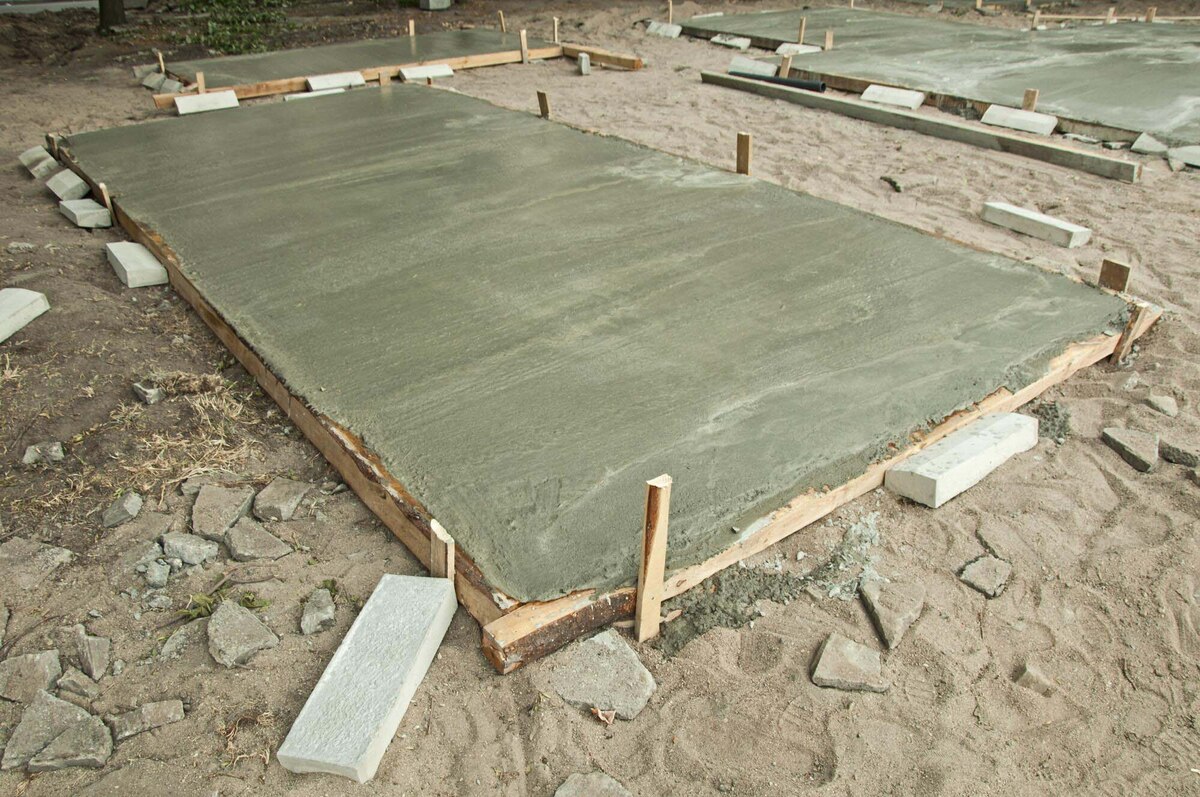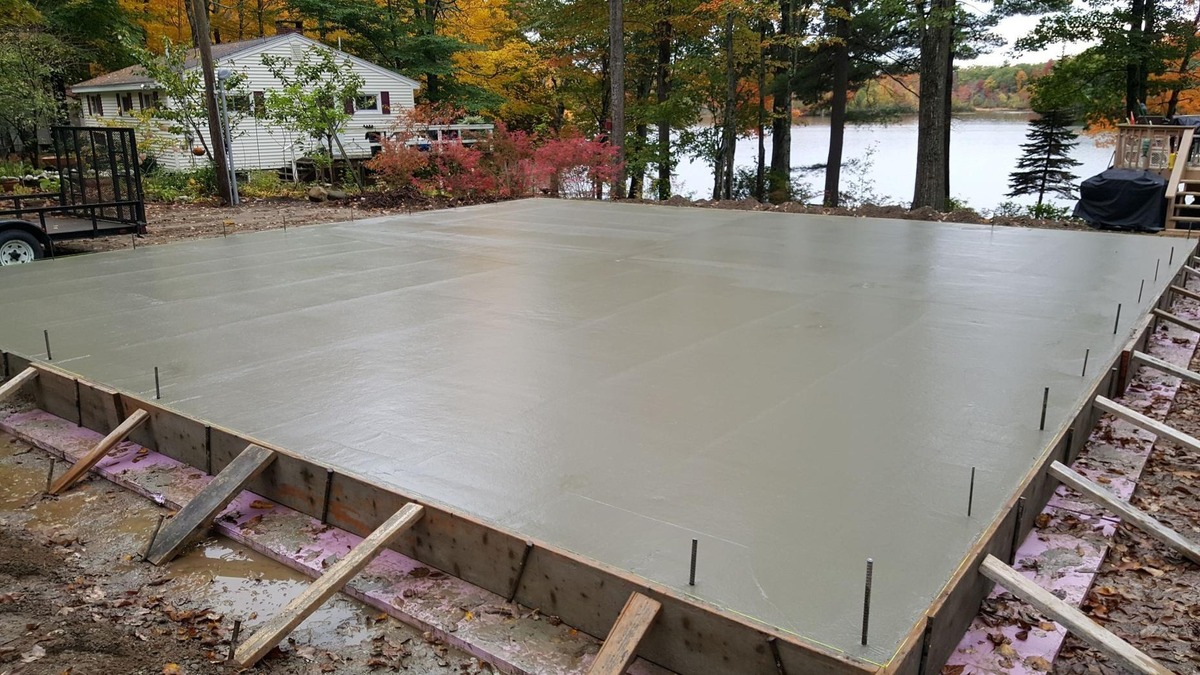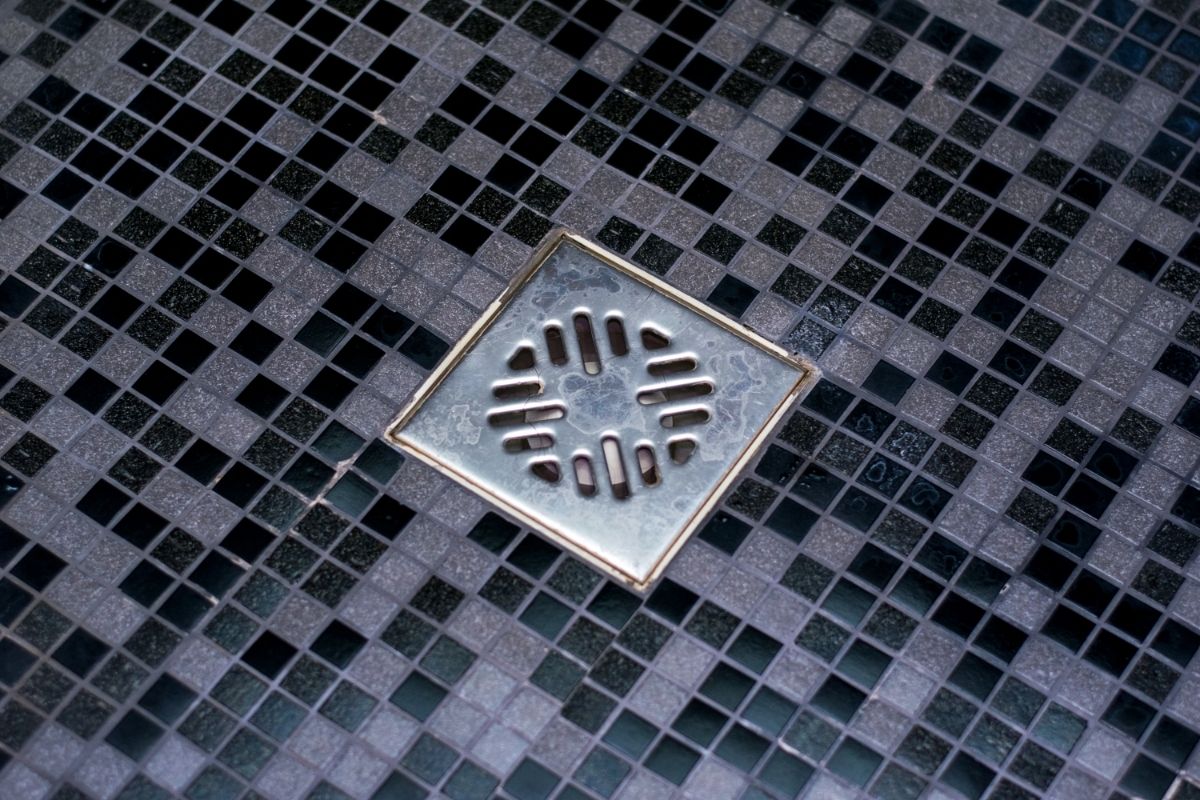Home>Gardening & Outdoor>Outdoor Structures>How Thick Does A Concrete Slab Need To Be For A Shed


Outdoor Structures
How Thick Does A Concrete Slab Need To Be For A Shed
Published: January 20, 2024
Ensure the stability of your outdoor structures with the right concrete slab thickness. Learn the ideal measurements for shed foundations.
(Many of the links in this article redirect to a specific reviewed product. Your purchase of these products through affiliate links helps to generate commission for Storables.com, at no extra cost. Learn more)
**
Introduction
**
When considering the construction of a shed, one of the crucial elements to contemplate is the foundation. A sturdy and well-designed foundation not only ensures the structural integrity of the shed but also contributes to its longevity. Among the various foundation options, a concrete slab stands out as a popular choice due to its durability and resilience. However, determining the appropriate thickness of the concrete slab is a pivotal aspect that demands careful consideration. In this comprehensive guide, we will delve into the essential factors to consider when determining the thickness of a concrete slab for a shed, along with the recommended thickness and additional considerations to ensure a robust and enduring foundation for your shed.
Key Takeaways:
- Ensure the stability and longevity of your shed by considering factors like shed size, soil type, and climate conditions when determining the thickness of the concrete slab.
- Follow industry guidelines and consider reinforcement, site preparation, and moisture barriers to create a durable and resilient foundation for your shed.
Read more: How Thick Should A Slab Be For A Shed
Factors to Consider
Several crucial factors come into play when determining the appropriate thickness of a concrete slab for a shed. Understanding and evaluating these factors is essential to ensure that the foundation meets the specific requirements of the shed and the environmental conditions. Here are the key factors to consider:
- Shed Size and Weight: The dimensions and weight of the shed play a significant role in determining the required thickness of the concrete slab. Larger and heavier sheds necessitate thicker slabs to provide ample support and prevent cracking or settling over time.
- Soil Type and Compaction: The soil composition and its compaction characteristics directly impact the stability and load-bearing capacity of the concrete slab. Different soil types, such as clay, sand, or gravel, possess varying load-bearing capacities, requiring tailored thicknesses for the concrete slab.
- Frost Line and Climate Conditions: In regions prone to freezing temperatures, the depth of the frost line is a critical consideration. The concrete slab must extend below the frost line to prevent frost heave, which can lead to structural damage. Moreover, extreme climate conditions, including heavy rainfall or high humidity, may necessitate thicker slabs to withstand moisture-related challenges.
- Intended Shed Use: The intended use of the shed influences the load it will bear. For instance, a shed designed for storing heavy equipment or machinery will require a thicker concrete slab compared to a shed used for light storage or as a workspace.
- Local Building Codes and Regulations: Adhering to local building codes and regulations is imperative when determining the thickness of the concrete slab. These codes may specify minimum requirements based on factors such as soil conditions, seismic activity, and environmental considerations.
By carefully assessing these factors, you can make informed decisions regarding the appropriate thickness of the concrete slab, ensuring a solid and resilient foundation for your shed.
Recommended Thickness for Concrete Slab
While the specific requirements for the thickness of a concrete slab for a shed can vary based on the factors mentioned earlier, there are general guidelines that can serve as a starting point for your project. These recommendations are based on industry standards and best practices to ensure the stability and longevity of the shed’s foundation.
For smaller sheds used to store lightweight items or as a workspace, a minimum concrete slab thickness of 4 inches is often deemed sufficient. This thickness can adequately support the typical loads associated with such structures while providing a durable and stable foundation.
For medium-sized sheds or those accommodating moderate loads, a thickness of 4 to 5 inches is commonly recommended. This slight increase in thickness enhances the load-bearing capacity of the slab, making it suitable for a broader range of applications without compromising structural integrity.
For larger sheds, workshops, or those intended to store heavy equipment or vehicles, a concrete slab with a thickness of 6 inches or more is advisable. The additional thickness provides the necessary strength and support to withstand heavier loads and minimize the risk of cracking or settling over time.
It is important to note that these recommendations serve as general guidelines, and specific considerations such as soil conditions, climate, and local building codes should always be factored into the decision-making process. Engaging a qualified professional or consulting local building authorities can provide valuable insights tailored to your specific circumstances.
By adhering to these recommended thicknesses and customizing them based on your shed’s unique requirements, you can establish a robust and reliable concrete slab that forms the foundation of a durable and long-lasting shed.
A concrete slab for a shed should be at least 4 inches thick, but 6 inches is recommended for heavier sheds or if the ground is not well compacted. Always use a good quality concrete mix for durability.
Additional Considerations
When planning the construction of a concrete slab for a shed, several additional considerations can significantly impact the performance and longevity of the foundation. By addressing these factors, you can enhance the durability and functionality of the concrete slab, ensuring optimal support for the shed structure. Here are some crucial additional considerations to keep in mind:
- Reinforcement and Control Joints: Depending on the size and intended use of the shed, reinforcing the concrete slab with steel mesh or rebar can bolster its strength and minimize the risk of cracking. Additionally, incorporating control joints at strategic locations can help control cracking caused by shrinkage and thermal expansion.
- Proper Site Preparation: Thorough site preparation, including excavation, leveling, and compacting the subgrade, is vital for the long-term stability of the concrete slab. Ensuring proper drainage to prevent water accumulation and addressing any soil compaction issues are essential preparatory steps.
- Moisture Barrier and Insulation: Installing a moisture barrier beneath the concrete slab serves as a protective measure against ground moisture, reducing the risk of moisture-related damage. In colder climates, incorporating insulation into the slab design can enhance thermal performance and prevent frost-related issues.
- Professional Installation and Quality Materials: Entrusting the installation of the concrete slab to experienced professionals ensures precision and adherence to best practices. Additionally, using high-quality concrete mix and suitable reinforcement materials is crucial for achieving a durable and resilient foundation.
- Future Expansion and Accessibility: Anticipating potential future expansion of the shed or the installation of utilities such as electrical wiring can influence the design and layout of the concrete slab. Incorporating conduits or planning for accessible areas can facilitate future modifications or upgrades.
By carefully considering these additional aspects and integrating them into the planning and construction process, you can optimize the performance and longevity of the concrete slab, laying a solid foundation for the shed that withstands the test of time.
Conclusion
Constructing a shed with a robust and well-designed foundation is essential for ensuring its structural integrity and longevity. The thickness of the concrete slab plays a pivotal role in providing the necessary support and stability for the shed, making it imperative to carefully consider various factors when determining the appropriate slab thickness.
By evaluating the shed’s size and weight, soil type and compaction, climate conditions, intended use, and local building regulations, you can make informed decisions regarding the thickness of the concrete slab. These considerations serve as crucial guidelines for tailoring the foundation to the specific requirements of your shed and the environmental context in which it will stand.
Adhering to recommended thickness ranges based on the shed’s size and anticipated loads, and considering additional factors such as reinforcement, site preparation, moisture barriers, and professional installation, ensures the creation of a durable and resilient foundation. By integrating these considerations into the construction process, you can establish a concrete slab that provides a solid footing for your shed while mitigating potential issues such as cracking, settling, or moisture-related damage.
Ultimately, a well-executed concrete slab forms the cornerstone of a reliable and enduring shed, offering a stable and secure space for storage, work, or leisure activities. By prioritizing the foundation’s quality and tailoring it to the shed’s specific needs, you can embark on the construction of a shed that stands the test of time, supported by a meticulously designed and appropriately thick concrete slab.
Frequently Asked Questions about How Thick Does A Concrete Slab Need To Be For A Shed
Was this page helpful?
At Storables.com, we guarantee accurate and reliable information. Our content, validated by Expert Board Contributors, is crafted following stringent Editorial Policies. We're committed to providing you with well-researched, expert-backed insights for all your informational needs.
















0 thoughts on “How Thick Does A Concrete Slab Need To Be For A Shed”